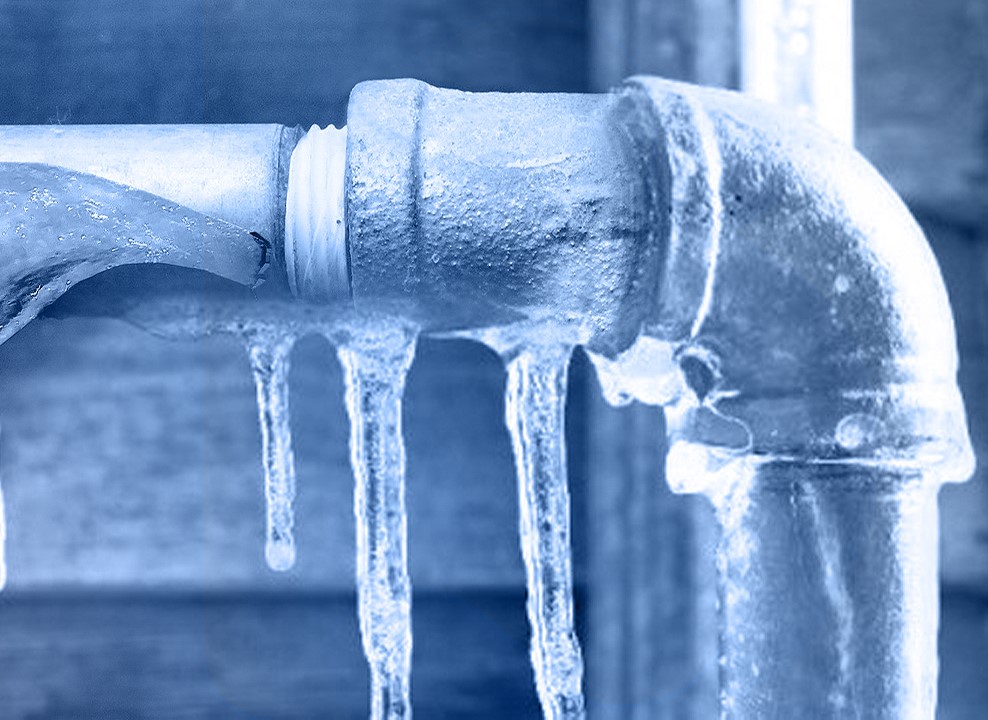Essential Methods for Avoiding Frozen Plumbing in Cold Weather
Essential Methods for Avoiding Frozen Plumbing in Cold Weather
Blog Article
The writer is making a few good points relating to How To Avoid Freezing Pipes in general in this article down the page.

Cold weather can wreak havoc on your pipes, particularly by freezing pipelines. Here's just how to prevent it from occurring and what to do if it does.
Intro
As temperature levels decline, the threat of icy pipelines increases, potentially resulting in expensive repair work and water damages. Recognizing how to prevent icy pipes is crucial for homeowners in chilly climates.
Comprehending Frozen Pipelines
What triggers pipelines to ice up?
Pipes ice up when exposed to temperatures below 32 ° F (0 ° C) for prolonged durations. As water inside the pipelines ices up, it expands, taxing the pipe wall surfaces and potentially triggering them to rupture.
Dangers and damages
Frozen pipelines can cause water system disturbances, residential or commercial property damage, and pricey repair work. Ruptured pipelines can flood homes and create considerable architectural damage.
Indications of Frozen Pipeline
Identifying icy pipes early can stop them from bursting.
Exactly how to determine icy pipelines
Search for lowered water flow from faucets, uncommon smells or noises from pipes, and visible frost on exposed pipes.
Avoidance Tips
Insulating susceptible pipes
Cover pipes in insulation sleeves or utilize heat tape to shield them from freezing temperatures. Focus on pipes in unheated or exterior locations of the home.
Heating methods
Maintain indoor spaces effectively warmed, particularly locations with plumbing. Open up closet doors to allow warm air to distribute around pipes under sinks.
Protecting Outdoor Pipes
Garden tubes and outside taps
Detach and drain pipes garden hoses prior to winter. Mount frost-proof spigots or cover outdoor faucets with insulated caps.
What to Do If Your Pipelines Freeze
Immediate actions to take
If you believe frozen pipelines, maintain faucets available to relieve stress as the ice melts. Utilize a hairdryer or towels soaked in warm water to thaw pipelines gradually.
Long-Term Solutions
Architectural adjustments
Take into consideration rerouting pipes away from outside wall surfaces or unheated locations. Include extra insulation to attics, cellars, and crawl spaces.
Updating insulation
Invest in top notch insulation for pipes, attics, and wall surfaces. Correct insulation assists maintain regular temperatures and lowers the threat of icy pipes.
Conclusion
Protecting against icy pipes needs aggressive measures and quick responses. By understanding the reasons, indicators, and safety nets, property owners can safeguard their pipes throughout winter.
Helpful Tips to Prevent Frozen Pipes this Winter
UNDERSTANDING THE BASICS: WHY PIPES FREEZE AND WHY IT’S A PROBLEM
Water freezing inside pipes is common during the winter months, but understanding why pipes freeze, and the potential problems it can cause is crucial in preventing such incidents. This section will delve into the basics of why pipes freeze and the associated problems that may arise.
THE SCIENCE BEHIND FROZEN PIPES
When water reaches freezing temperatures, it undergoes a physical transformation and solidifies into ice. This expansion of water as it freezes is the primary reason pipes can burst. As the water inside the pipe freezes, it expands, creating immense pressure on the walls. If the pressure becomes too great, the pipe can crack or rupture, leading to leaks and water damage.
FACTORS THAT CONTRIBUTE TO PIPE FREEZING
Low Temperatures: Extremely cold weather, especially below freezing, increases the risk of pipes freezing. Uninsulated or Poorly Insulated Pipes: Pipes located in unheated areas, such as basements, crawl spaces, or attics, are more prone to freezing. Insufficient insulation or lack of insulation altogether exacerbates the problem. Exterior Wall Exposure: Pipes running along exterior walls are susceptible to freezing as they encounter colder temperatures outside. Lack of Heating or Temperature Regulation: Inadequate heating or inconsistent temperature control in your home can contribute to frozen pipes. PROBLEMS CAUSED BY FROZEN PIPES
- Pipe Bursting: As mentioned earlier, the expansion of water as it freezes can cause pipes to burst, resulting in significant water damage.
- Water Damage: When pipes burst, it can lead to flooding and water damage to your property, including walls, ceilings, flooring, and personal belongings.
- Structural Damage: Prolonged exposure to water from burst pipes can compromise the structural integrity of your home, leading to costly repairs.
- Mold and Mildew Growth: Excess moisture from water damage can create a favorable environment for mold and mildew growth, posing health risks to occupants.
- Disrupted Water Supply: Frozen pipes can also result in a complete or partial loss of water supply until the issue is resolved.
WHY CERTAIN PIPES ARE MORE PRONE TO FREEZING
- Location: Pipes located in unheated or poorly insulated areas, such as basements, crawl spaces, attics, or exterior walls, are at higher risk of freezing.
- Exterior Pipes: Outdoor pipes, such as those used for irrigation or exposed plumbing, are particularly vulnerable to freezing as they are directly exposed to the elements.
- Supply Lines: Pipes that carry water from the main water supply into your home, including the main water line, are critical to protect as freezing in these lines can affect your entire plumbing system.
- Underground Pipes: Pipes buried underground, such as those connected to sprinkler systems or outdoor faucets, can be susceptible to freezing if not properly insulated.
https://busybusy.com/blog/helpful-tips-to-prevent-frozen-pipes-this-winter/

We were shown that article about How to prepare your home plumbing for winter weather from an associate on a different web address. For those who enjoyed our blog posting kindly be sure to pass it around. Thanks a lot for taking the time to read it.
Schedule Service Now Report this page